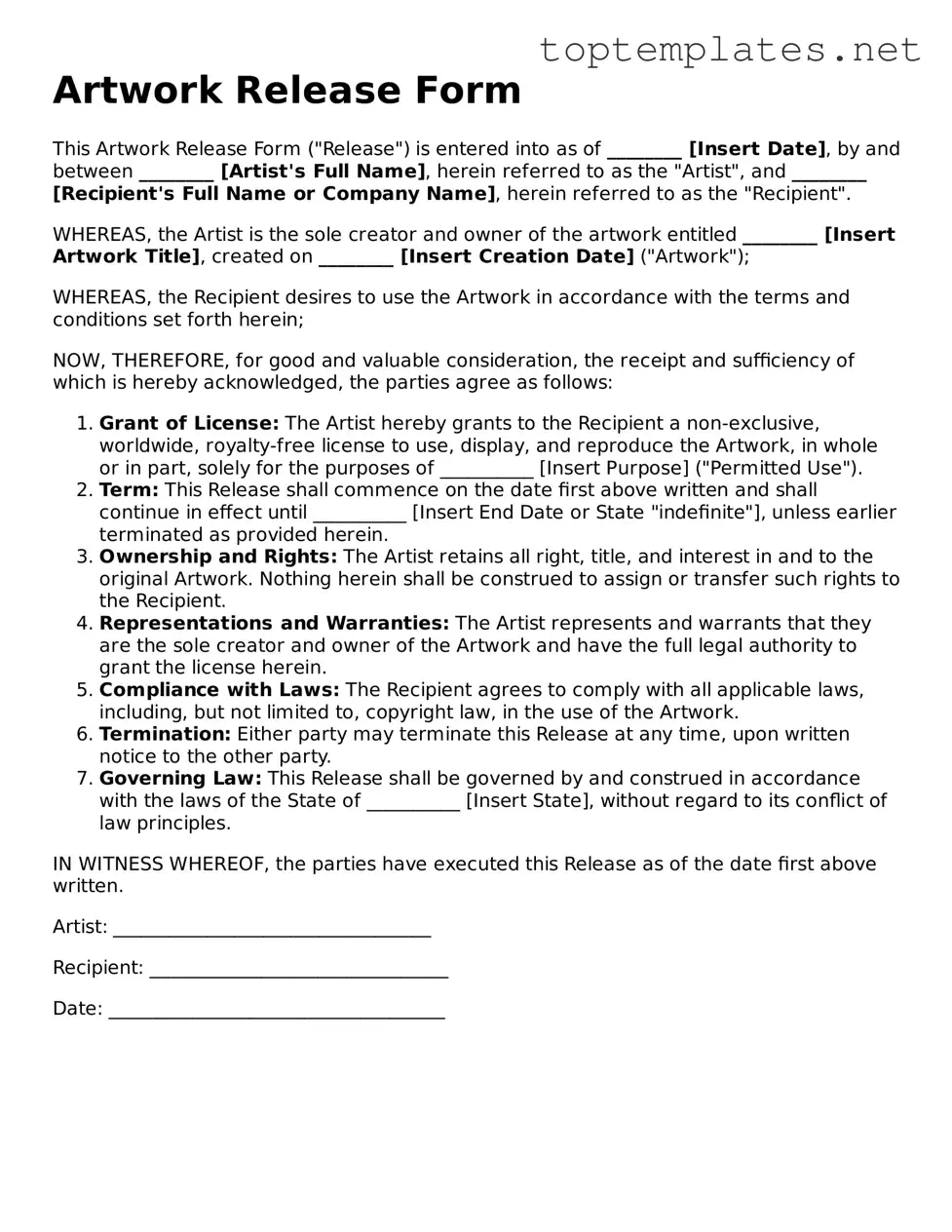What is an Artwork Release Form?
An Artwork Release Form is a legal document that grants permission to use an artist's work in various media formats. It outlines the rights being transferred from the artist to another party, ensuring that the artwork can be used legally for specified purposes.
Why is an Artwork Release Form necessary?
This form is necessary to prevent any legal disputes related to copyright infringement. By obtaining the artist's express consent in writing, both the artist and the party using the artwork are protected under copyright law.
What information should be included in an Artwork Release Form?
A comprehensive Artwork Release Form should include the artist's name, the user's name, a description of the artwork being released, the specific rights being granted, any limitations on those rights, the duration of the agreement, and any compensation for the artist.
Can an Artwork Release Form be revoked?
Yes, but it depends on the terms of the agreement. Some forms specify conditions under which the agreement can be terminated or revoked. It's important to review the terms of the release form to understand the process for revocation.
Is an Artwork Release Form legally binding in all countries?
While an Artwork Release Form is legally binding in many countries, the specific legal recognition and enforcement may vary. It's advisable to consult with a legal expert in the country where the artwork will be used to ensure compliance with local laws.
Do I need a lawyer to create an Artwork Release Form?
While it's not mandatory to have a lawyer create an Artwork Release Form, consulting a legal professional can ensure that all necessary legal points are covered and the agreement is enforceable. This can provide peace of mind and protect against potential legal issues.
Can digital art be covered under an Artwork Release Form?
Yes, digital art can and should be covered under an Artwork Release Form. As with traditional forms of art, digital art is protected by copyright law, and the release form will outline the terms under which it can be used.
What happens if someone uses the artwork without an Artwork Release Form?
Using artwork without obtaining the necessary release can lead to copyright infringement claims. The artist may seek legal compensation for unauthorized use, which can include financial damages and an injunction against further use of the artwork.
